
Introduction
Proper grooming is essential for the health and well-being of our furry friends. Regular grooming not only keeps dogs looking their best, but it also helps maintain their overall hygiene. Whether you’re a new dog owner or a seasoned pet parent, mastering the art of dog grooming can be a rewarding experience. In this guide, we will explore valuable tips and tricks to help you navigate the world of dog grooming.
Brushing Your Dog’s Coat
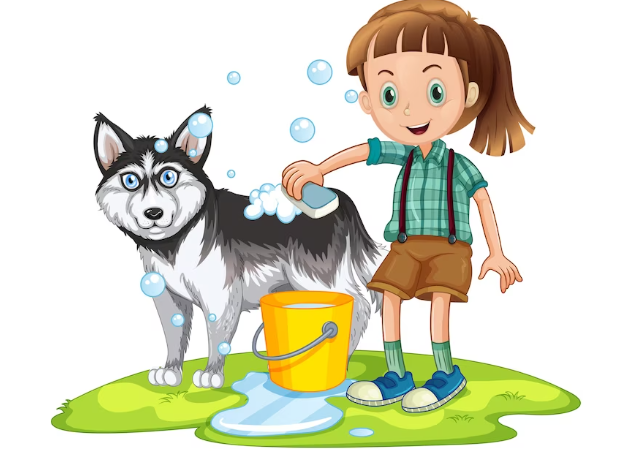
An important facet of dog grooming tips and tricks is regular brushing. The type of coat on your dog affects how frequently you ought to brush them. Dogs with short hair may only require a washed once a week, but dogs with long or heavy coats may need to be brushed every day. It encourages healthy skin and coat growth and aids in the removal of loose hair, dust, and debris from your dog’s hair. To avoid irritating your dog’s skin, use a brush made for their coat type.
Bathing Your Dog

Brushing your dog’s coat is a fundamental aspect of dog grooming that promotes a healthy and lustrous coat while preventing matting and tangling. It’s a bonding experience that allows you to care for your furry friend and keep their coat in optimal condition. Here are some valuable tips and tricks to help you master the art of brushing your dog’s coat.
-
Choose the Right Brush: Different dogs have varying coat types, such as short, long, curly, or double-coated. Invest in the appropriate brush for your dog’s specific coat to ensure effective brushing and prevent discomfort.
-
Start Slowly: If your dog is not accustomed to brushing, introduce the process gradually. Begin with short brushing sessions and gradually increase the duration as your dog becomes more comfortable.
-
Gentle Strokes: Use gentle, long strokes while brushing to remove loose hair, tangles, and debris. Avoid applying excessive pressure, as it may cause discomfort or skin irritation.
Trimming Your Dog’s Nails
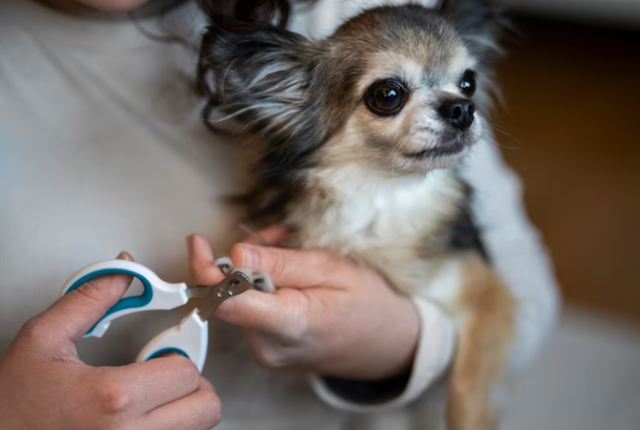
Trimming your dog’s nails is an essential part of dog grooming that helps prevent discomfort, injuries, and potential health issues. However, many dogs are wary of nail trims, making it a challenging task for pet owners. With the right approach and techniques, you can ensure a safe and successful nail trimming session. Here are valuable tips and tricks to help you master the art of trimming your dog’s nails.
-
Choose the Right Tools: Invest in a quality pair of dog nail clippers or a nail grinder, depending on your preference and your dog’s comfort level. Ensure the tools are sharp and suitable for your dog’s nail size.
-
Get Your Dog Familiarized: Gradually introduce your dog to the nail trimming process. Start by touching their paws and offering treats or praise to create positive associations. This will help reduce anxiety and make the experience more pleasant for your dog.
-
Observe the Quick: The quick is the pink area within your dog’s nail that contains blood vessels and nerves. Avoid cutting into the quick, as it can cause bleeding and pain. Trim a small portion at a time, or consult a professional groomer or veterinarian for guidance.
Cleaning Your Dog’s Teeth
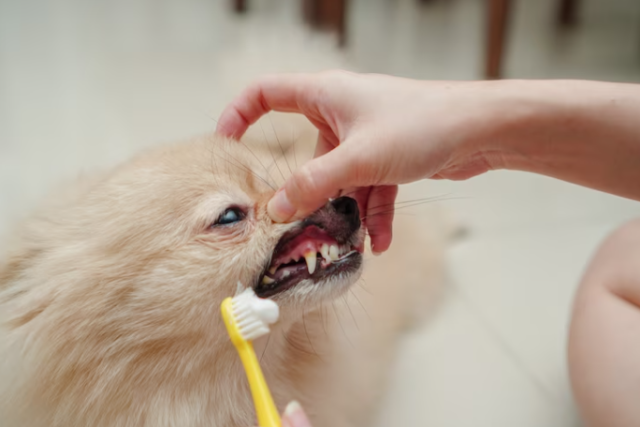
Proper dental care is crucial for your dog’s overall health and well-being. Just like humans, dogs are susceptible to dental issues such as tartar buildup, gum disease, and tooth decay. Regular teeth cleaning can help prevent these problems and ensure a happy, healthy smile for your furry friend. Here are valuable tips and tricks to effectively clean your dog’s teeth.
-
Use Dog-Specific Toothpaste: Never use human toothpaste, as it contains ingredients that can be harmful to dogs. Instead, use toothpaste specially formulated for dogs. These come in flavors that dogs enjoy, such as poultry or beef.
-
Introduce Toothbrushing Gradually: Start by getting your dog accustomed to the taste of the toothpaste. Allow them to lick it off your finger or a toothbrush. Gradually introduce the toothbrush, gently brushing a few teeth at a time.
-
Choose the Right Toothbrush: Use a toothbrush specifically designed for dogs. It should have soft bristles and a size suitable for your dog’s mouth. Alternatively, finger brushes or dental wipes can be used if your dog is more comfortable with them.
Grooming Your Dog’s Ears

Proper ear care is an important aspect of dog grooming that helps prevent infections and discomfort. Regularly cleaning your dog’s ears not only removes dirt and wax but also allows you to detect any potential issues early on. Here are valuable tips and tricks to effectively groom your dog’s ears.
-
Choose the Right Ear Cleaner: Use a dog-specific ear cleaner recommended by your veterinarian. Avoid using cotton swabs or alcohol, as they can cause damage to the delicate ear canal.
-
Establish a Positive Association: Introduce your dog to ear cleaning gradually and make it a positive experience. Offer treats or praise during and after the process to help them associate it with something enjoyable.
-
Observe the Ears: Regularly inspect your dog’s ears for signs of redness, swelling, discharge, or a foul odor. These may indicate an ear infection or other issues, and you should consult your veterinarian for proper treatment.
Dealing with Shedding

Shedding is a natural process for dogs, but it can be a challenge for pet owners to manage the constant influx of fur in their homes. Fortunately, there are tips and tricks to help you effectively deal with shedding and keep your dog’s coat under control.
-
Regular Brushing: Brushing your dog’s coat regularly is the most effective way to manage shedding. Use a brush or comb suitable for your dog’s coat type, and make it a part of your routine. This helps remove loose hair and reduces the amount of fur that ends up on your furniture and floors.
-
Choose the Right Tools: Different coat types require different grooming tools. For example, slicker brushes work well for long-haired breeds, while rubber curry brushes are effective for short-haired breeds. Experiment with different brushes to find what works best for your dog.
-
Bathe Your Dog: Regular baths can help loosen and remove dead hair. Use a dog-specific shampoo and follow proper bathing techniques. Avoid over-bathing, as it can strip away essential oils and cause skin dryness, which may increase shedding.
Handling Mats and Tangles
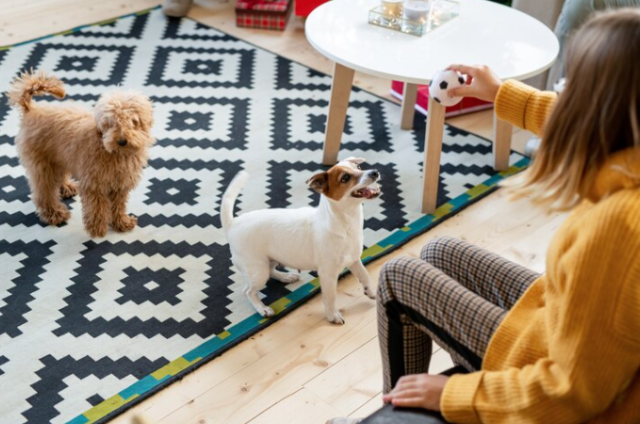
Mats and tangles can be a common challenge in dog grooming, especially for dogs with longer or curly coats. These can cause discomfort, skin irritation, and may even lead to more severe issues if left unattended. With the right techniques and tools, you can effectively handle mats and tangles while keeping your dog’s coat healthy and beautiful.
-
Regular Brushing: Prevention is key. Brush your dog’s coat regularly to remove loose hair and prevent mats from forming. Choose a brush suitable for your dog’s coat type and establish a brushing routine.
-
Use a Detangling Spray: For stubborn mats or tangles, use a detangling spray or a dog-friendly conditioner to help loosen the hair and make it easier to comb through. Follow the product instructions and apply it to the affected areas before brushing.
-
Start from the Bottom: When encountering a mat or tangle, start brushing from the bottom of the fur, working your way up. This prevents pulling on the hair and causing discomfort to your dog.
Choosing the Right Grooming Tools

Selecting the appropriate grooming tools is crucial for maintaining your dog’s coat health and ensuring a comfortable grooming experience. With a wide range of tools available, it can be overwhelming to determine which ones are best suited for your dog’s specific needs. Here are valuable tips and tricks to help you choose the right grooming tools.
-
Brush: Choose a brush based on your dog’s coat type. For short-haired breeds, a bristle brush or a rubber curry brush works well. Long-haired breeds may require a slicker brush or a pin brush. Research your dog’s coat type or consult a professional groomer for guidance.
-
Comb: Combs are useful for removing tangles and keeping the coat tidy. Metal combs with wide and narrow teeth are versatile and effective for most coat types. Ensure the teeth are rounded at the tips to prevent scratching your dog’s skin.
-
Nail Clippers: Select nail clippers based on the size of your dog and their nail thickness. Guillotine-style clippers are suitable for small to medium-sized dogs, while scissor-style clippers work well for larger breeds. Opt for clippers with sharp blades for a clean cut.
Grooming for Different Coat Types

Different dog breeds have various coat types, each requiring specific grooming techniques and tools. Understanding how to groom your dog’s particular coat type is essential for maintaining their coat health and appearance. Here are valuable tips and tricks for grooming different coat types.
-
Short Coat: Breeds with short coats, such as Boxers or Beagles, benefit from regular brushing with a bristle brush or rubber curry brush. This helps remove loose hair and distribute natural oils. Bathing can be done as needed with a dog-specific shampoo, followed by thorough drying.
-
Long Coat: Breeds like Shih Tzus or Maltese have long, flowing coats that require regular brushing to prevent tangles and matting. Use a slicker brush or pin brush to remove tangles and finish with a comb to ensure a well-groomed appearance. Regular trimming around the eyes, ears, and paws is also necessary.
-
Double Coat: Breeds with double coats, like Golden Retrievers or Huskies, have a dense undercoat and a longer outer coat. Brushing with an undercoat rake or de-shedding tool is essential to remove loose fur and prevent matting. Regular bathing should be done with a dog-specific shampoo, followed by thorough drying.
Grooming Your Dog’s Face
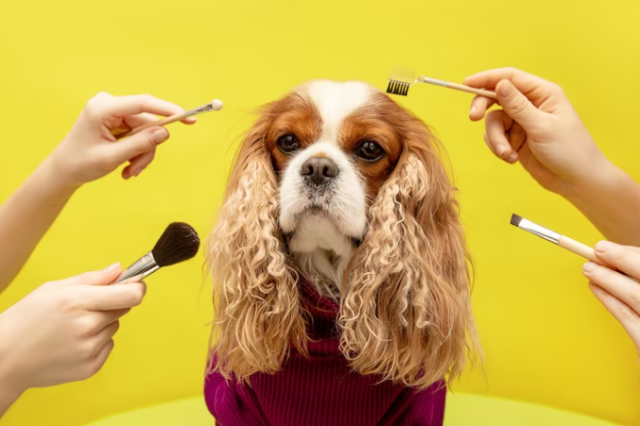
Grooming your dog’s face is an important aspect of dog care that helps maintain their hygiene, health, and overall appearance. The face requires special attention as it is sensitive and contains features that require specific grooming techniques. Here are valuable tips and tricks for grooming your dog’s face.
-
Brushing: Use a soft-bristled brush or a face-specific brush to gently remove loose hair and debris from your dog’s face. Pay extra attention to the areas around the eyes, nose, and mouth.
-
Eye Care: Regularly check and clean your dog’s eyes to prevent tear stains and eye infections. Use a damp cloth or eye wipes specifically designed for dogs to gently wipe away any discharge or tear stains. Consult your veterinarian if you notice excessive tearing or signs of irritation.
-
Ear Cleaning: Clean your dog’s ears regularly to prevent ear infections. Use a dog-specific ear cleaner and a soft cloth or cotton ball to gently wipe the outer part of the ear. Avoid inserting anything into the ear canal. Seek professional help if you notice any signs of infection or discomfort.
Additional Dog Grooming Tips and Tricks
Managing Fleas and Ticks

Fleas and ticks can be a common nuisance for dogs, causing discomfort, itching, and potentially transmitting diseases. Effective flea and tick prevention and management are crucial for your dog’s health and well-being. Here are valuable tips and tricks to help you manage fleas and ticks.
-
Regular Flea and Tick Prevention: Use veterinarian-approved flea and tick prevention products regularly, such as spot-on treatments, collars, or oral medications. Follow the product instructions carefully and ensure you choose the right product for your dog’s size and age.
-
Flea Comb: Use a fine-toothed flea comb to comb through your dog’s fur regularly. This helps remove adult fleas and can detect any signs of flea infestation.
-
Environmental Control: Keep your dog’s living environment clean and vacuum regularly to remove flea eggs and larvae. Wash your dog’s bedding in hot water to kill any fleas or eggs.
Maintaining Your Dog’s Skin and Coat Health

A healthy skin and coat are vital indicators of your dog’s overall well-being. Proper grooming practices can help maintain their skin’s health, prevent skin issues, and keep their coat looking shiny and beautiful. Here are valuable tips and tricks for maintaining your dog’s skin and coat health.
-
Regular Brushing: Brush your dog’s coat regularly to remove loose hair, prevent matting, and distribute natural oils. The frequency of brushing depends on your dog’s coat type and length. Use a brush suitable for their specific needs.
-
Balanced Diet: Feed your dog a nutritionally balanced diet that promotes skin and coat health. Ensure their diet includes essential fatty acids, vitamins, and minerals. Consult with your veterinarian for specific dietary recommendations.
-
Proper Hydration: Ensure your dog has access to clean, fresh water at all times. Proper hydration is crucial for maintaining healthy skin and coat.
When to Seek Professional Dog Grooming Tips and Tricks
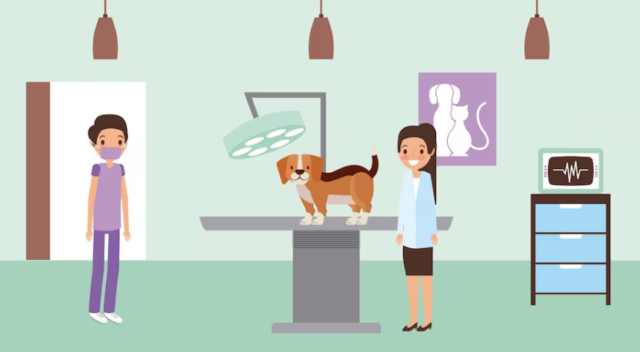
While regular grooming can be done at home, there are situations where seeking professional dog grooming services becomes necessary. Professional groomers have the expertise, tools, and experience to handle specific grooming needs. Here are valuable tips and tricks to help you recognize when it’s time to seek professional dog grooming:
-
Breed-Specific Grooming: Certain dog breeds have unique grooming requirements that may be best handled by a professional groomer. Breeds with complex coats, such as Poodles or Bichon Frises, often require intricate cuts and styling that professional groomers specialize in.
-
Specific Grooming Techniques: Professional groomers are skilled in various grooming techniques, such as hand-stripping for wire-haired breeds or breed-specific trims. If you desire a specific grooming style or need specialized grooming services, a professional groomer can fulfill your requirements.
-
Matting and Tangles: Severe mats or tangles can be challenging to handle, especially for dogs with long or curly coats. Professional groomers have the expertise and tools to safely and effectively remove mats without causing discomfort or injury to your dog.
Conclusion
Proper grooming is an essential aspect of caring for your dog’s overall health and well-being. By incorporating the tips and tricks mentioned above, you can become a confident and capable dog groomer, ensuring your furry friend looks and feels their best.
Establishing a grooming routine, choosing the right grooming tools, and understanding the specific needs of your dog’s coat type are fundamental steps in effective grooming. Regular brushing, bathing, and nail care are vital for maintaining a clean and healthy dog. Additionally, taking care of your dog’s ears, teeth, and face contributes to their overall hygiene and comfort.
Kindness: Want to help animals around the world? Visit peta.
FAQs
Q1: How often should I brush my dog's coat?
The frequency of brushing depends on the type of coat your dog has. Dogs with short hair may only require brushing once a week, while dogs with longer or heavy coats may need to be brushed daily. Regular brushing helps maintain a healthy coat and removes loose hair, dust, and debris.
Q2: How often should I bathe my dog?
The frequency of bathing depends on factors such as the type of coat, activity level, and general health of your dog. Dogs with dry skin may need fewer baths, while dogs with greasy or odorous coats may require more frequent bathing. It's best to consult with your veterinarian to determine the appropriate bathing schedule for your dog.
Q3: How do I trim my dog's nails?
Nail trimming is an essential part of dog grooming. It's important to use the right tools and techniques to avoid discomfort or injury to your dog. If you're not confident in clipping your dog's nails, it's recommended to seek assistance from a professional groomer or veterinarian.
Q4: How do I clean my dog's ears?
Regular ear cleaning is necessary to maintain your dog's ear health and prevent infections. You can use a soft cloth, cotton ball, or mild ear cleanser to clean your dog's ears. Avoid using cotton swabs, as they can potentially harm the ear canal.
Q5: How can I prevent shedding and deal with mats and tangles?
Shedding is a natural process for dogs, but certain breeds may shed more than others. Regular brushing can help control shedding. To deal with mats and tangles, you can use a detangling spray or mat splitter. It's important to avoid using scissors to cut mats, as it can be harmful to your dog.
Read also
- Nutritional Yeast for Dogs: A Comprehensive Guide
- Unleashing the Wonders of Cujo Dog Breed | Discover Their Unruly Nature
- Choose the Best Dog Food for Your Picky Eaters Needs
- Stop Your Dog’s Tail Chewing Habits with These Effective Strategies
- Tuffy Dog Toys – Durable, Fun & Safe for Your Pooch
- Homemade Dog Food Recipe: Happy Tail-Wagging Guaranteed!
- 7 Secrets About Chihuahua Husky Mixes That Will Amaze You!
- Dog Food Storage Container: Keeping Your Pet’s Meals Fresh and Organized
- Barking Shock Collars Suitable for all Dogs?
- Unveiling the Alluring Sandlot Dog Breed: A Perfect Blend of Charm and Playfulness
- Exploring the Best Wet Dog Food for Your Canine Companion
- Attention Dog Lovers: Japanese Breeds Unleashed!
- Find the Best Dog Food for Your Huskies
- 5 Foolproof Steps to Master Puppy Crate Training
- Best Dog Food for Shih Tzu With Allergies
- Guide to Choosing Canned Dog Food for Sensitive Stomachs
- 7 Basic Dog Commands: A Guide to Training Your Pup
- Chihuahua: Breed Info, Characteristics, Temperament, Lifespan, Grooming, Training
- Your Pitbull’s Skin Allergies Can’t Wait!
- Dog Dental Chart: A Comprehensive Guide to Your Dog’s Dental Health











